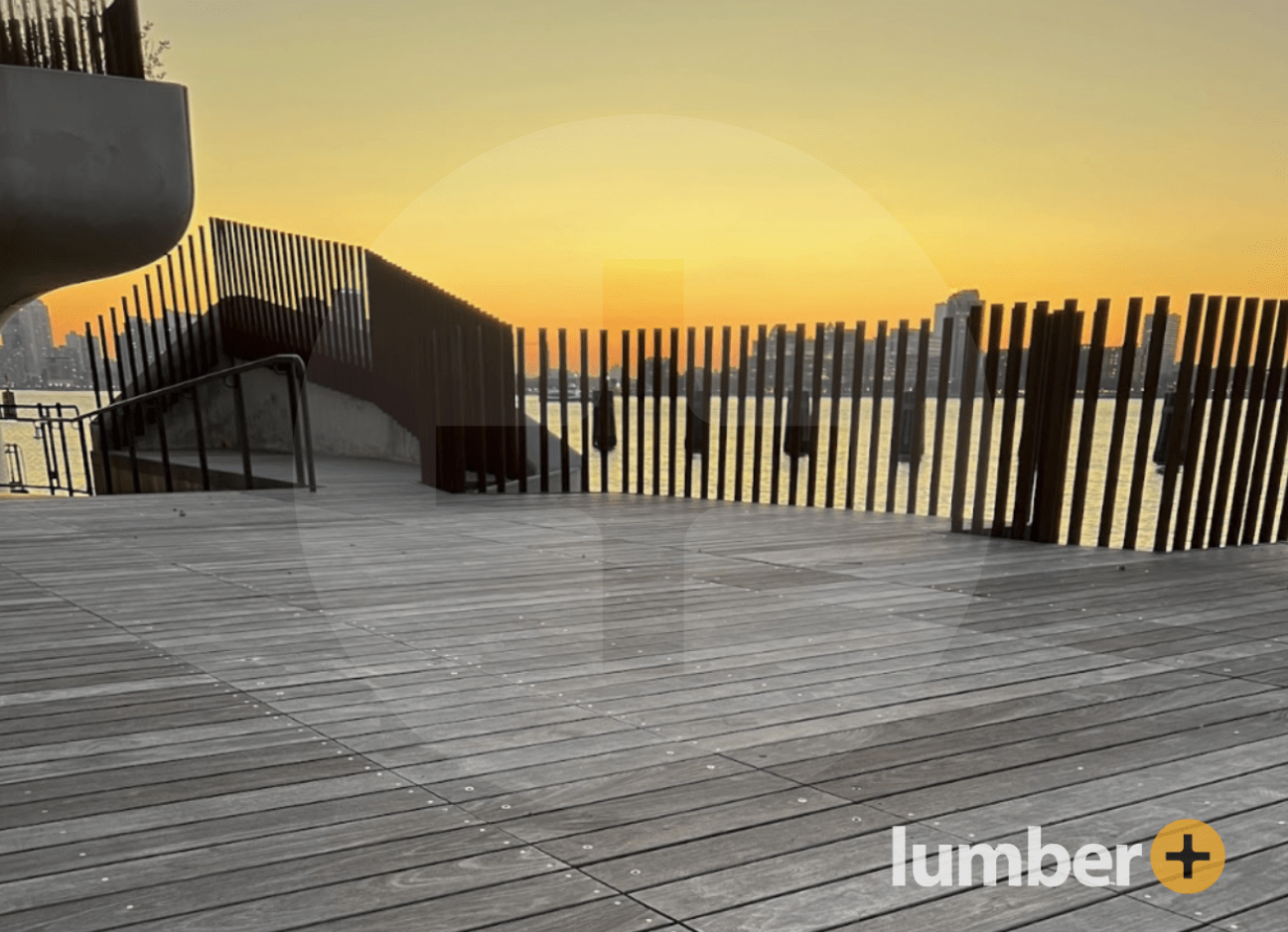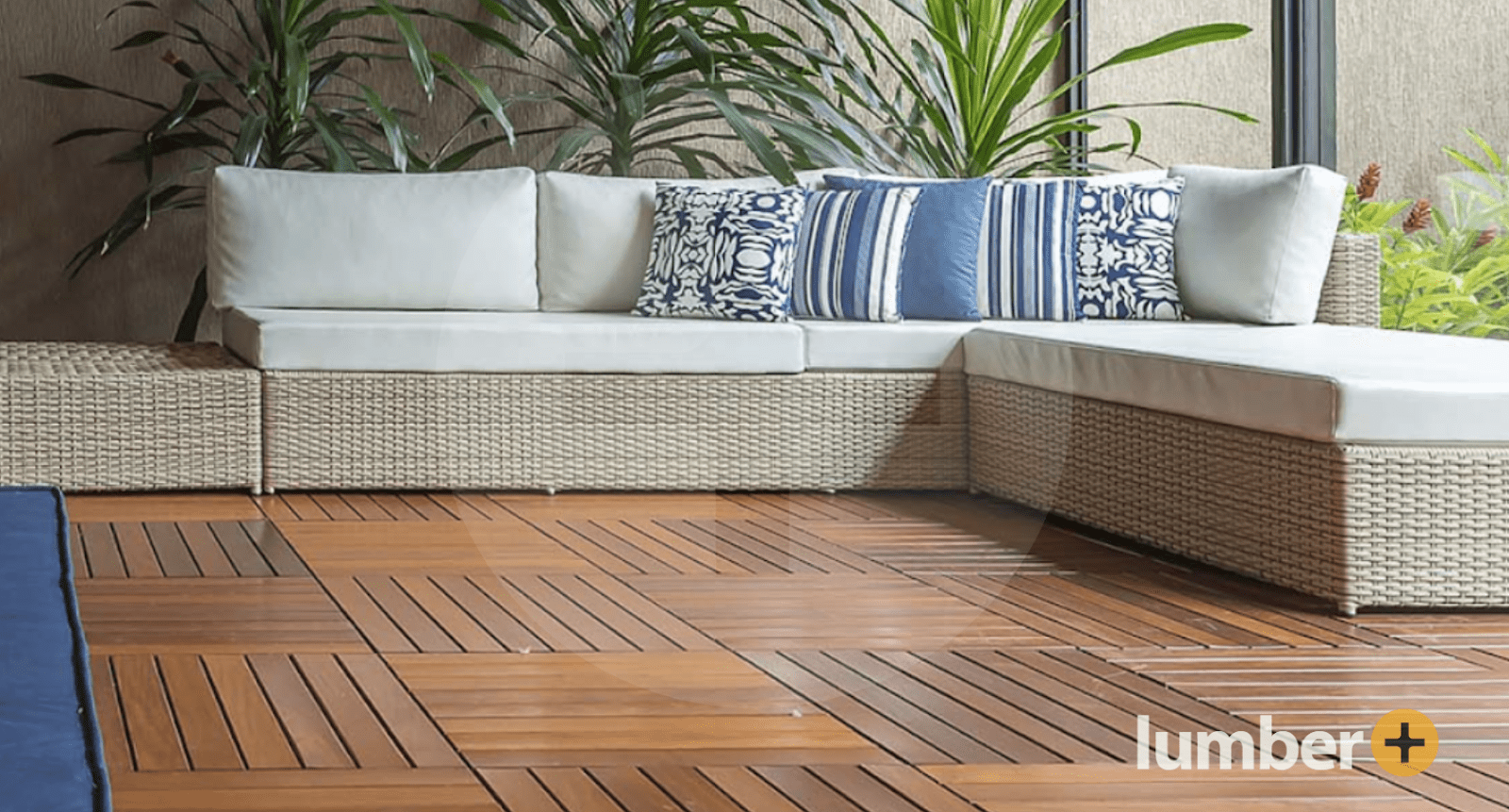Choosing the right decking material can make a significant impact in the projects of homeowners, DIY builders, and contractors.
At Lumber Plus, we understand the importance of selecting the best materials for your outdoor projects, which is why we recommend it’s important to understand the differences between Ipe vs Mahogany decking materials, including cost, durability, and style.
Exploring Ipe Decking

Origin and Characteristics
Ipe, also known as Brazilian walnut, is derived from the Tabebuia tree species. It’s renowned for its extreme hardness and density, which makes it ideal for outdoor use, and it adjusts well to various climates—high humidity and dry weather.
Because of these qualities, Ipe decking is a popular choice for decking and indoor projects, and its natural resistance to insects and decay further enhances its suitability for outdoor applications.
Cost
While Ipe wood is initially more expensive, its exceptional durability and low maintenance requirements make it a cost-effective option in the long run, which reduces the need for frequent replacements and repairs.
Appearance
Ipe’s natural colors range from dark brown to olive brown and age to a silver-gray patina if left untreated. The wood typically has a straight grain but can feature a variety of grain styles—including irregular and interlocked patterns.
This variety in grain and color enhances the visual appeal of the Ipe decking, and it is best preserved with oil applications rather than staining because staining can be challenging due to its density.
Sustainability
Sourcing Ipe, however, can be challenging because of illegal logging, but sustainably harvested options are available and are FSC-Certified, which guarantees that the wood comes from responsibly managed forests that provide environmental, social, and economic benefits.
Exploring Mahogany Decking
Origin and Characteristics
Genuine mahogany is sourced from the Americas and Oceania, including countries like Honduras, and Brazil, and plantations in Fiji.
It’s known for its tight grain and rich reddish-brown color, which is prized for its beauty and workability. It is also a popular choice for both indoor and outdoor applications that adds elegance and durability to any project.
Cost
Generally, mahogany is less expensive than Ipe and costs around $6 to $10 per board foot. Because the wood is softer than Ipe, it makes it easier to work with, which results in lower installation costs, and the overall affordability combined with its aesthetic appeal makes Mahogany a favored choice among homeowners and contractors.
Appearance
Mahogany’s rich reddish hues can be enhanced with stains to provide a luxurious look. It ages to a gray color if left untreated, similar to Ipe. Mahogany is also celebrated for its wavy and attractive grain patterns, which can be further enhanced with the right staining techniques.
Sustainability
Mahogany is often harvested sustainably—particularly from plantations in Fiji. This ensures that the decking material is sourced responsibly.
Similarly to Ipe, FSC certifications can help ensure that the Mahogany you choose is sustainably sourced to protect forests and support local communities.
Installation Challenges

Ipe
Ipe is extremely dense and hard, which makes it more challenging to work with than other woods.
Despite these challenges, Ipe’s density contributes to its superior strength and longevity, to create a stable and resilient decking surface that can withstand heavy use and severe weather conditions.
Mahogany
On the other hand, Mahogany is softer and easier to cut and install (as was mentioned above), which makes it more friendly for DIY projects.
Aesthetic Appeal: Grain Patterns

Ipe
The grain patterns of Ipe wood can significantly contribute to its aesthetic appeal. Typically, Ipe features a straight grain but can also exhibit a variety of grain styles.
This variety in grain patterns can enhance the visual interest and uniqueness of Ipe decking to make it a popular choice for those seeking a distinct look.
Mahogany
Mahogany is known for its wavy grain patterns, giving it a unique appearance.
These patterns can be highlighted with specific staining techniques, making Mahogany a common choice for those who want a noticeable deck. The reddish tones of Mahogany contribute to its traditional look, which can suit different design styles.
Maintenance Requirements

Ipe
While maintaining the natural beauty of Ipe can be a bit challenging due to its density and natural oils, its unparalleled durability and resilience make it an exceptional choice for high-traffic areas.
Ipe’s strength ensures that it stands up to the demands of outdoor projects, offering a long-lasting, high-performance decking solution that combines both beauty and practicality.
Mahogany
On the other hand, Mahogany is simpler to maintain and offers more options for color customization. Regular oiling is needed to preserve its reddish tones and protect it from weathering, making it a more practical choice for those seeking a lower-maintenance decking material that still looks good.
Applications and Use Cases

Ipe
Ipe is commonly used for public boardwalks and high-end residential decks. Its durability and low maintenance make it a top choice for long-lasting outdoor installations.
Looking for an easier-to-install decking solution? Consider installing 24″ x 24″ deck tiles for a faster and cleaner project.
Mahogany
Suitable for moderate traffic and decorative projects, mahogany is often used for residential decks and luxury outdoor furniture. Its ease of workability and rich appearance make it a favored material for DIY enthusiasts and contractors.
Enhance Your Outdoor Spaces with Lumber Plus
Now that you understand the differences between Ipe vs Mahogany decking, partner with Lumber Plus to find the perfect decking materials for your next project.
Whether you prefer the durability of Ipe or the classic appeal of mahogany, our extensive range of high-quality decking options will meet your needs.
Contact us today for more information!






